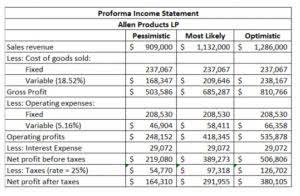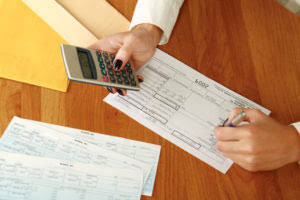-
Address: S.No.58 , 1st Floor , Paras Hub ,
Latur Road, Vasarni , Nanded - 431604 -
Call Us: +91 8799 932 678
info@instachem.co.in

This form notifies the Internal Revenue Service (IRS) of the change in accounting method and ensures everything is documented correctly. By making these adjustments for revenue, the entity’s financial statements will accurately reflect the accrual basis of accounting and provide a more comprehensive view of the organization’s financial performance. This section of the accrual to cash conversion excel worksheet is used to convert expenses incurred to cash payments by adjusting for movements on accrued expenses payable, and prepayments. Cash basis accounting records transactions when cash is received or paid out.

Understanding Accrual to Cash Conversions – Examples
- If your business has not been in existence for all of the 3 tax-year period used in figuring average gross receipts, base your average on the period it has existed.
- A partnership or an S corporation that makes a section 444 election must make certain required payments and a PSC must make certain distributions (discussed later).
- This deducts revenue received in the previous period but relating to the current period.
- After converting from cash basis to accrual accounting, it is essential to assess and review the outcomes to ensure the accuracy and efficiency of the new accounting method.
- The main difference between accrual and cash basis accounting is the timing when revenue and expenses aren’t recognized.
- The Union also proposed adjusting language with respect to first aid/evacuation kits, stating that departments would be required to document the location of said kits.
- The main difference between accrual and cash basis accounting lies in the timing of when revenue and expenses are recognized.
Good business decisions are based on knowing what actual cash you have in your bank account to use for business operations. Under the cash method, income is not taxed until it is received, and expenses are not deducted until they are paid. This can lead to potential tax deferrals of income recognition and an acceleration of expense recognition, potentially lowering taxable income in the short term.
Consider using accrual basis accounting.
Shifting from the single-entry cash system to a double-entry accrual system means booking additional entries for accrued and prepaid amounts that represent income earned or expenses incurred. In general the following cash to accrual conversion formulas can be used to convert each revenue and expense income statement account from the cash basis to the accrual basis of accounting. Professionals such as physiciansand lawyers and some relatively small businesses may account fortheir revenues and expenses on a cash basis. The cash basisof accounting recognizes revenues when cash is receivedand recognizes expenses when cash is paid out. For example, acompany could perform work in one year and not receive paymentuntil the following year.

Cash Basis of Accounting – Overview
Adjusting entries play a vital role in this process, ensuring that the financial statements accurately reflect the business’s economic activities. Adjusting entries can be broadly categorized into several types, each addressing different aspects of accounting transactions. These include accruals, deferrals, prepaid expenses, and accrued revenues. Converting to accrual accounting typically impacts a business’s income tax and tax return preparation. One key aspect is the requirement to file Form 3115, the Application for Change in Accounting Method.
How to manage your chart of accounts
The following are examples of types of changes that are not changes in accounting methods and do not require IRS approval. If you do not use LIFO and you previously determined inventories without eliminating markdowns in making adjustments to retail selling prices, you can continue this practice only if you first get IRS approval. You can adopt and use this practice on the first tax return you file for the business, accrual to cash adjustments subject to IRS approval on examination of your tax return. An item considered material for financial statement purposes is also considered material for tax purposes. However, in certain situations an immaterial item for financial accounting purposes is treated as material for purposes of economic performance. Generally, you cannot deduct or capitalize a business expense until economic performance occurs.
- Businesses manage their finances using either cash basis of accounting or accrual basis of accounting.
- If you authorize someone to be your agent and receive income for you, you are considered to have received it when your agent receives it.
- Income is not constructively received if your control of its receipt is subject to substantial restrictions or limitations.
- Under the cash basis method, inventory is expensed when purchased, while in accrual accounting, inventory is recognized as an asset on the balance sheet.
If you’re an inventory-heavy business, your accountant will probably recommend you go with the accrual method. Bench, which uses both software and human bookkeepers, also offers both methods, with cash basis being the default. These differences hold true for when it’s time to do taxes, as well—let’s take a look at how different this web company’s taxes would look if they use the cash method or accrual method. To convert your accrual books to the cash basis, you need to add any unearned revenue to your net income.

